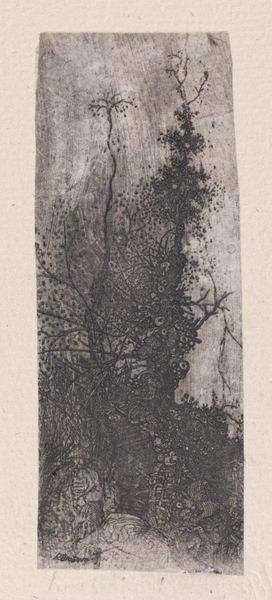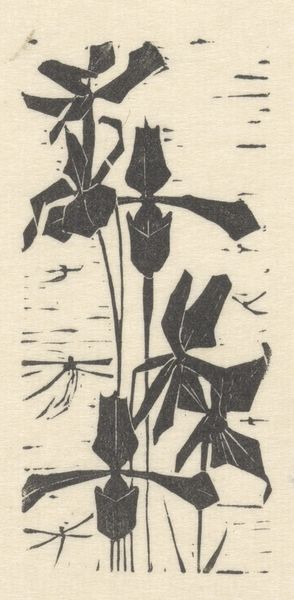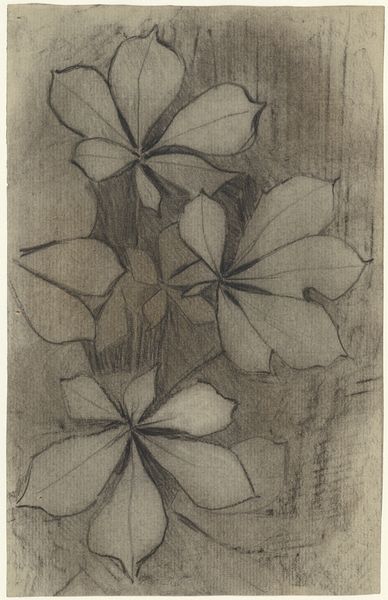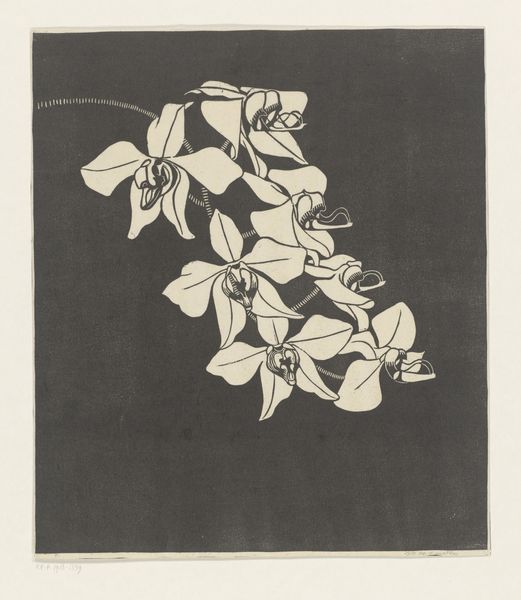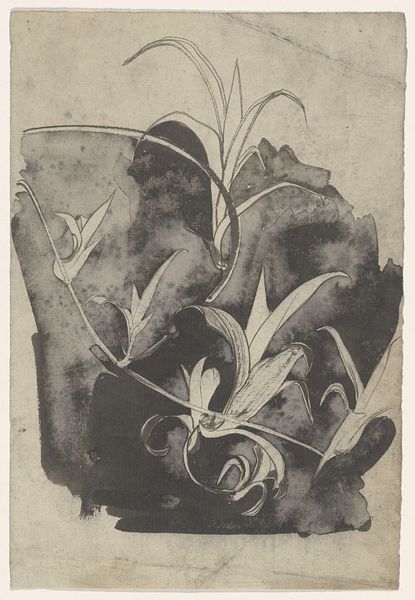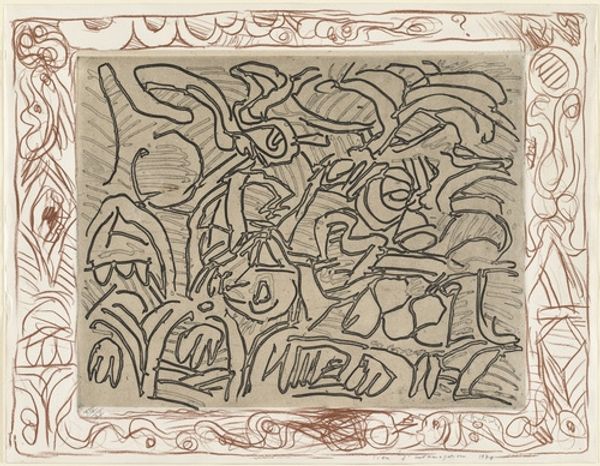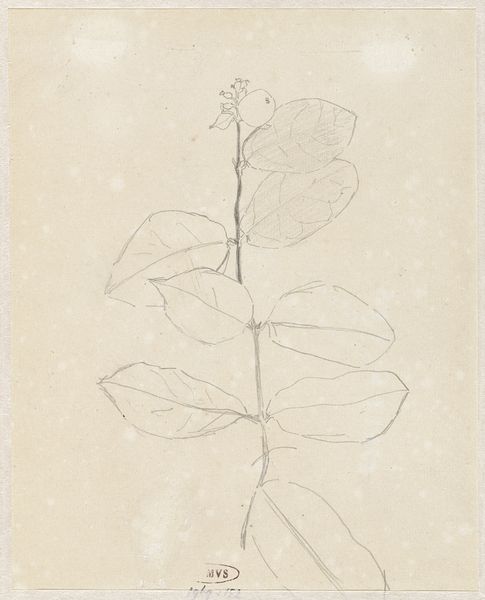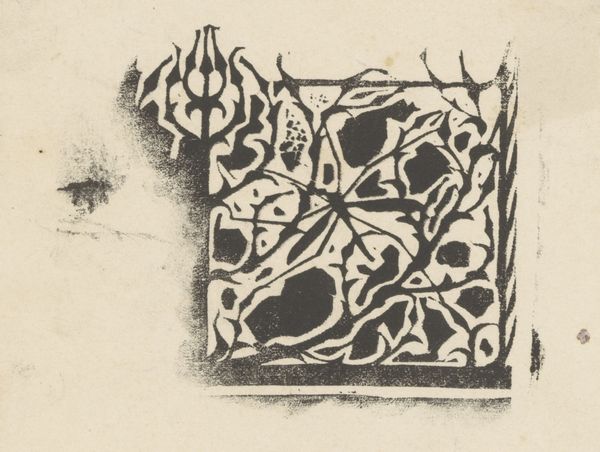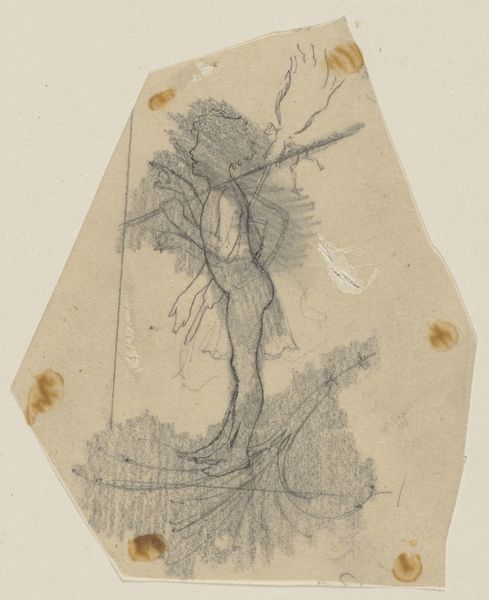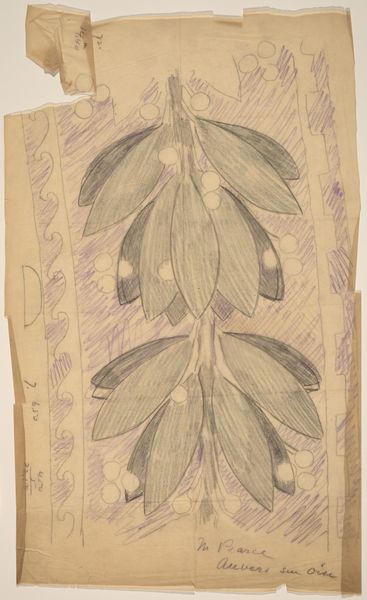
drawing, paper, pencil
#
drawing
#
art-nouveau
#
etching
#
paper
#
geometric
#
pencil
Dimensions: sheet (irregular): 6.3 × 6.6 cm (2 1/2 × 2 5/8 in.) mount: 45.6 × 30 cm (17 15/16 × 11 13/16 in.)
Copyright: National Gallery of Art: CC0 1.0
Editor: This is Charles Sprague Pearce's "Study for a Border Design," created sometime between 1890 and 1897 using pencil and etching on paper. The symmetrical design feels calm, but a little unfinished. How do you see this piece in relation to its historical context? Curator: Well, viewing it as a historian, I think this design offers a fascinating glimpse into the socio-political function of Art Nouveau. Consider the late 19th century: industrialization was booming, yet there was a yearning for handcrafted beauty. Editor: So this design is a response to that? Curator: Precisely. The organic forms – the leaves and berries – evoke a sense of naturalism, a rebellion against mass-produced, impersonal items. Art Nouveau aimed to bring art into everyday life, making beauty accessible to a wider audience. Do you notice how this border design could be applied to various functional objects, maybe even textiles? Editor: Now that you mention it, yes. It’s almost mass-producible. The etching aspect hints to replication, contradicting the hand-made ideals, maybe? Curator: Exactly! It’s a subtle commentary on the tensions between art and industry during the period, demonstrating how artists negotiated these conflicting ideals. By making designs easily replicated and accessible they walked a line between their own craft and the burgeoning world of mass production and dissemination of imagery. Editor: That's a very insightful observation! I initially just saw it as a pretty design, but now I see it reflects wider social shifts in that period. Curator: Indeed. Art is rarely created in a vacuum.
Comments
No comments
Be the first to comment and join the conversation on the ultimate creative platform.
